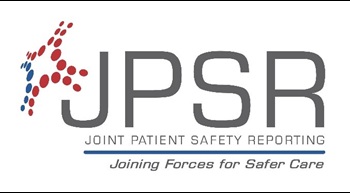Skip subpage navigation
All Military Health System Click to closeDirect CareDirect care refers to military hospitals and clinics, also known as “military treatment facilities” and “MTFs.”direct care facilities must report qualifying patient safety events to the DOD Patient Safety Program through Joint Patient Safety Reporting. Self-reporting is one of the key components in the MHS’s effort to achieve high reliability, and continuously improve and provide the safest patient care possible. Events that are reported encompass all levels of severity and types of medical and dental care.
 Reported events include:
Reported events include:
- Potential Events: Unsafe conditions that increase the likelihood of a patient safety event.
- Near Misses: Events that are caught and do not reach the patient.
- Actual Events: Patient safety events that reach the patient and may or may not cause harm.
The reporting of all patient safety events, even those that don’t reach the patient, allows the DOD PSP to identify, analyze and learn from the sequence of events that may potentially lead to errors before they affect patients.
The DOD PSP's Patient Safety Analysis Center, analyzes the reported data and additional data sources to provide cumulative data reports and feedback to the military treatment facilities through the services. These analyses are then used to design and develop programs and tools to assist the MTFs in reducing preventable harm and improve safety throughout the direct care system.
Resources
- Joint Patient Safety Reporting system: CAC-enabled online application to self-report patient safety events.
- JPSR User Guide: This guide is designed for those who are new to JPSR or would like a refresher. Download from the PSLC and keep as a desk-side reference.
- JPSR Video Knowledge Base: Watch training videos in JKO demonstrating JPSR functionalities, including how to enter a patient safety event, investigation form, searching, reporting, and hotspots.
- Step-by-step instructions on how to access these videos are located at www.health.mil/elearning.
- It is recommended the videos are completed in numerical order. A video knowledge base completion checklist is also available. A link to this document is available on JKO above the first video link and in the “Resources” section below the videos.
- FAQs: Frequently asked questions from DOD users about JPSR is available in the JPSR Community in JKO. The FAQ topics include account/login, contacts, JPSR Help Desk, hotspots, notifications, permissions, searching and reports, and review/investigation.
- Step-by-step instructions on how to access this community are located at www.health.mil/elearning.
- The FAQs for DOD Users PDF is accessible in the “Resources” section below the videos.
- Feedback Questionnaire: Provide feedback anytime on JPSR for future improvements.
You also may be interested in...
You are leaving Health.mil
The appearance of hyperlinks does not constitute endorsement by the Department of Defense of non-U.S. Government sites or the information, products, or services contained therein. Although the Defense Health Agency may or may not use these sites as additional distribution channels for Department of Defense information, it does not exercise editorial control over all of the information that you may find at these locations. Such links are provided consistent with the stated purpose of this website.
You are leaving Health.mil
View the external links disclaimer.
Last Updated: May 17, 2024